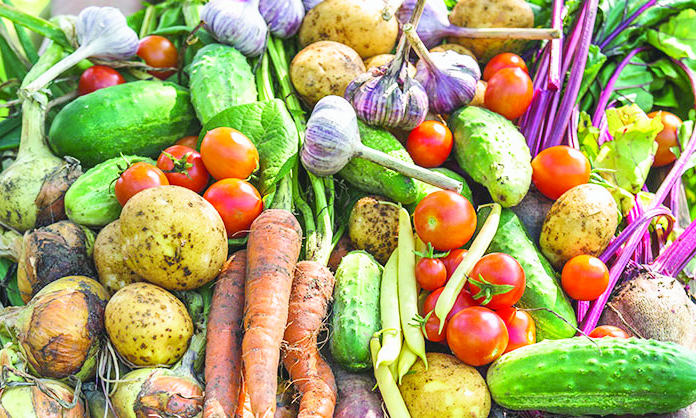Namibia celebrates a significant leap in food security, reaching a 45% self-sufficiency rate, the highest in 15 years, thanks to a collaborative effort between smallholder farmers, large-scale producers, and international support.
Food self-sufficiency refers to the country’s ability to produce enough food without having to import additional food.
This was announced in a joint statement issued by the Namibian Agronomic Board (NAB) and the World Food Programme (WFP) last week after the two organisations held a celebratory event at Zita-Mutumba village in the Zambezi region to mark Namibia’s impressive achievement.
According to the statement, Namibia has achieved 55% self-sufficiency in local vegetable production and also reached a combined total of 45% self-sufficiency in the local production of agronomic (grains) and horticultural (fruits and vegetables) crops.
“This accomplishment is the result of the combined efforts of smallholder farmers and large-scale commercial farmers and highlights a reduction in the country’s reliance on food imports, particularly for staple grain crops such as white maize, pearl millet and wheat, which has experienced substantial growth to 50% in a good rainy season,” the statement says.
According to the NAB, this achievement stands in contrast to the fact that Namibia’s self-sufficiency rate was only 5% for horticultural products and about 20% for agronomic crops 15 years ago.
In a keynote address read on his behalf, Zambezi governor Lawrence Sampofu highlighted the current market shares of the Zambezi region, noting that it accounts for approximately 7% of white maize and 25% of mahangu grains.
However, he pointed out that the region’s contribution to horticultural crops is relatively low, standing at less than 1%.
Sampofu emphasised the importance of participating in the market share promotion (MSP) scheme, encouraging farmers to capitalise on this initiative for enhanced market opportunities.
The NAB regulates the movement of agronomic and horticultural products.
It facilitates import restrictions during periods of sufficient local production to protect local producers from competition against cheaper imports, and promotes food self-sufficiency as a nation.
NAB chief executive Fidelis Mwazi reaffirmed the commitment to implementing a robust import substitution programme, including initiatives like the MSP, to create a conducive environment and a thriving market for local farmers.
“The objective is to expand operations, increase crop production and propel Namibia towards food self-sufficiency while diminishing dependence on imports,” he said.
The World Food Programme (WFP) is among the entities at the forefront, championing and end-to-end food systems approach to achieve food security in Namibia.
To date, the programme has provided climate-smart agricultural technology, drought-resistant seeds, as well as investment in agri-infrastructure and clean energy sources.
This is in addition to facilitating market access, training on good agricultural practices and value addition.
“Over the years, the WFP has been complementing the government of Namibia’s priorities in scaling up domestic food production, facilitating partnerships and investments that enable the country to capture greater value from the food system, as well as strengthen systems and structures that demonstrate efficiency and effectiveness to deliver on this mandate,” said Ericah Shafuda, the WFP’s deputy country director and representative in Namibia.
The WFP provides technical support to the government to help strengthen the food systems value chain, as well as accelerate rural transformation towards the attainment of zero hunger.
* email: matthew@namibian.com.na
Stay informed with The Namibian – your source for credible journalism. Get in-depth reporting and opinions for
only N$85 a month. Invest in journalism, invest in democracy –
Subscribe Now!






